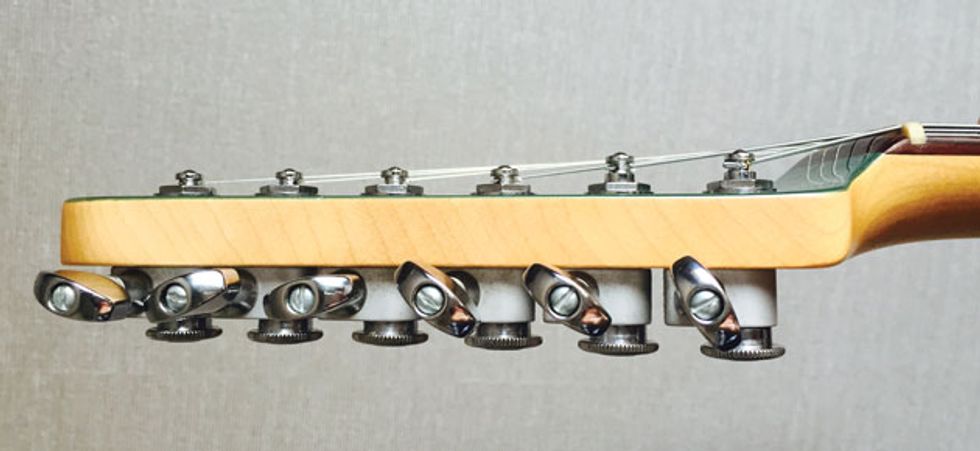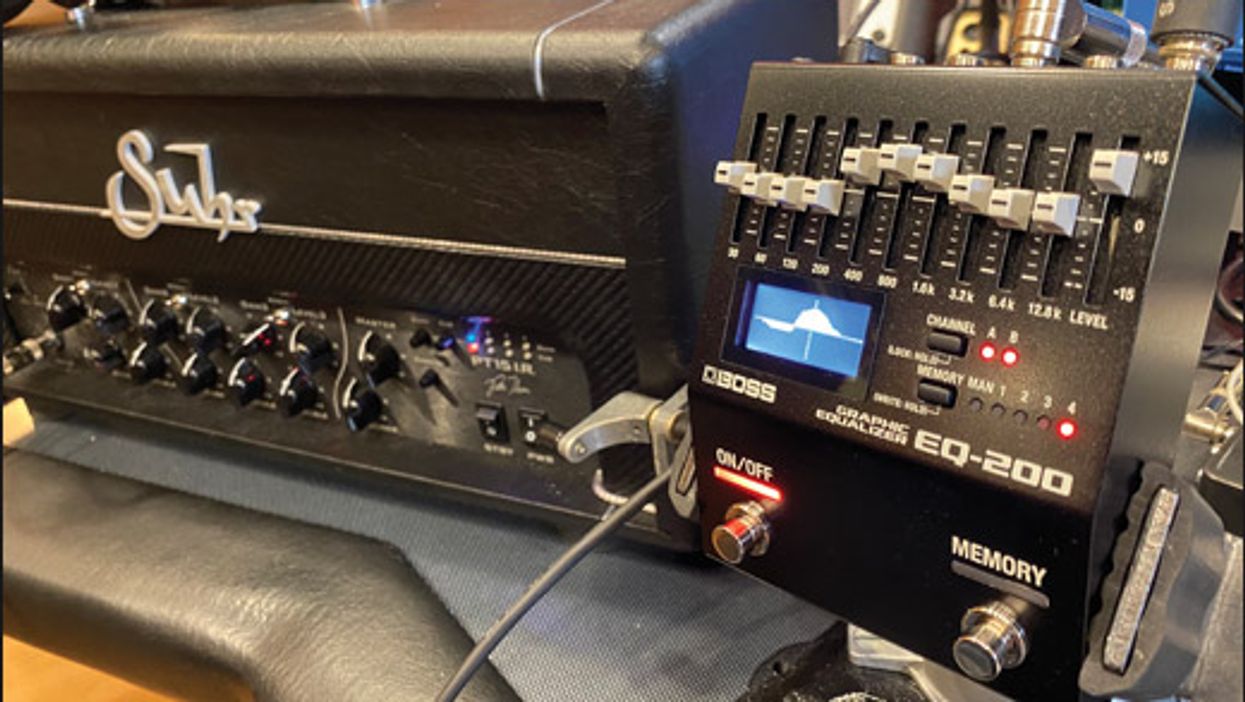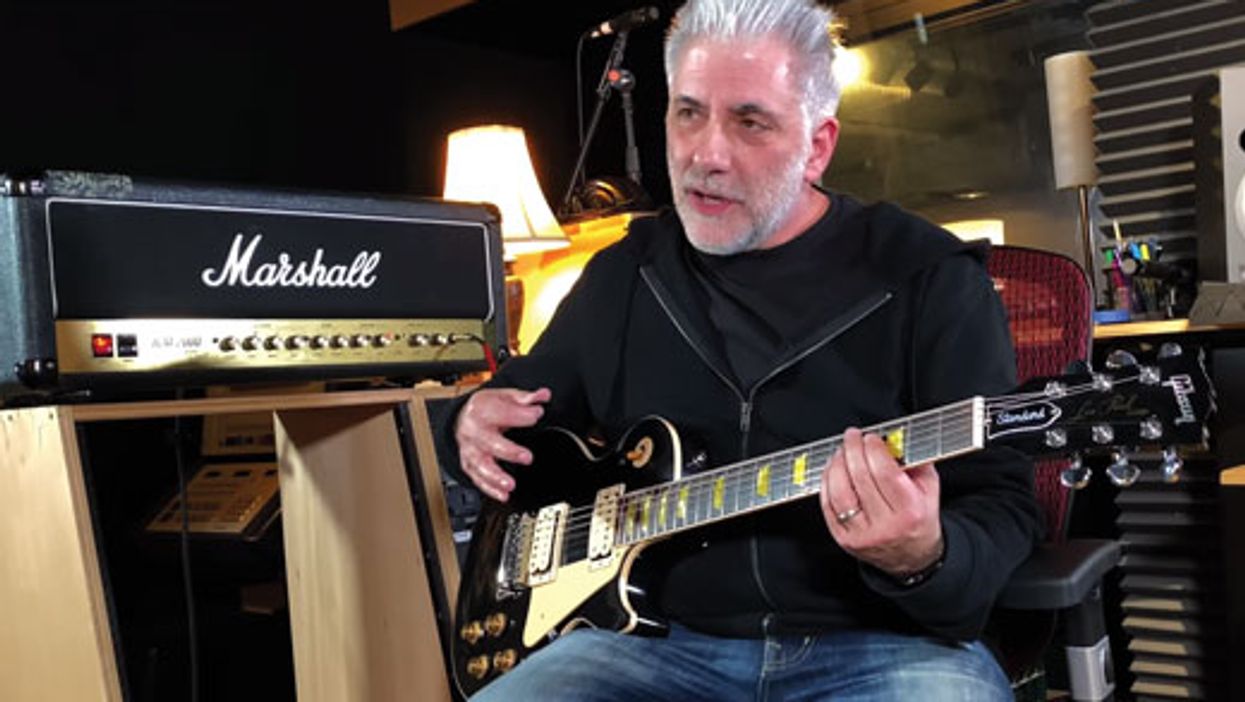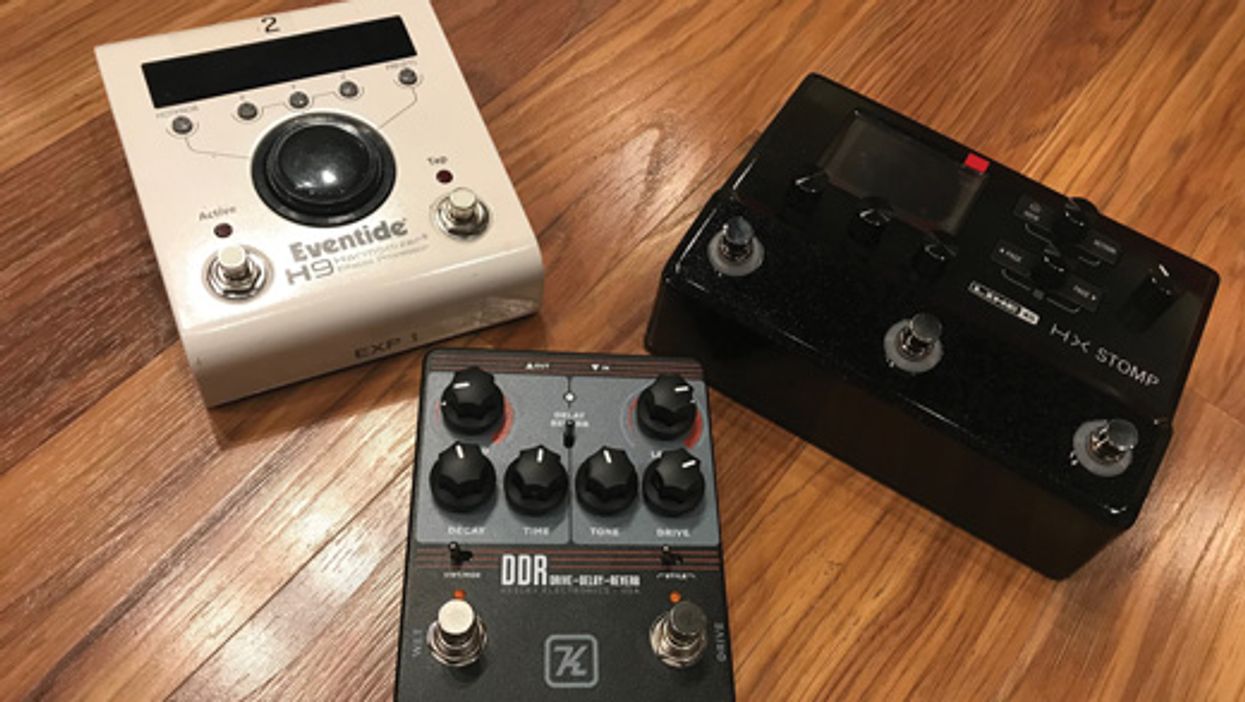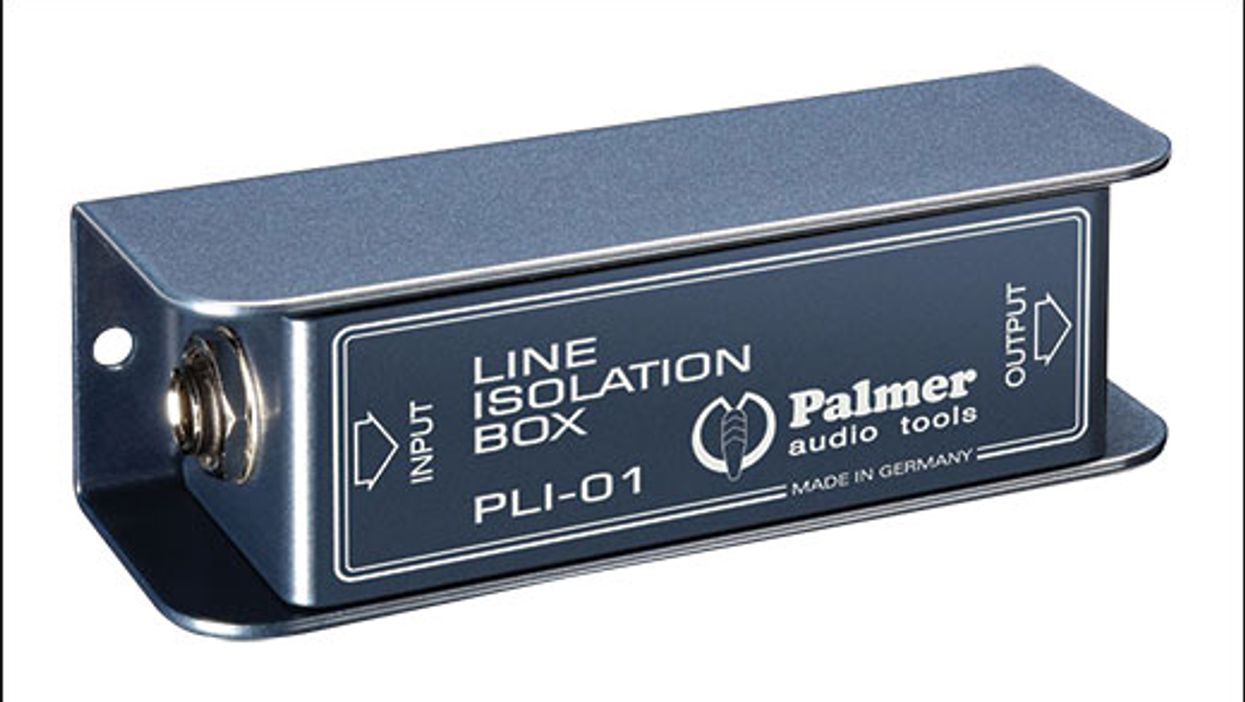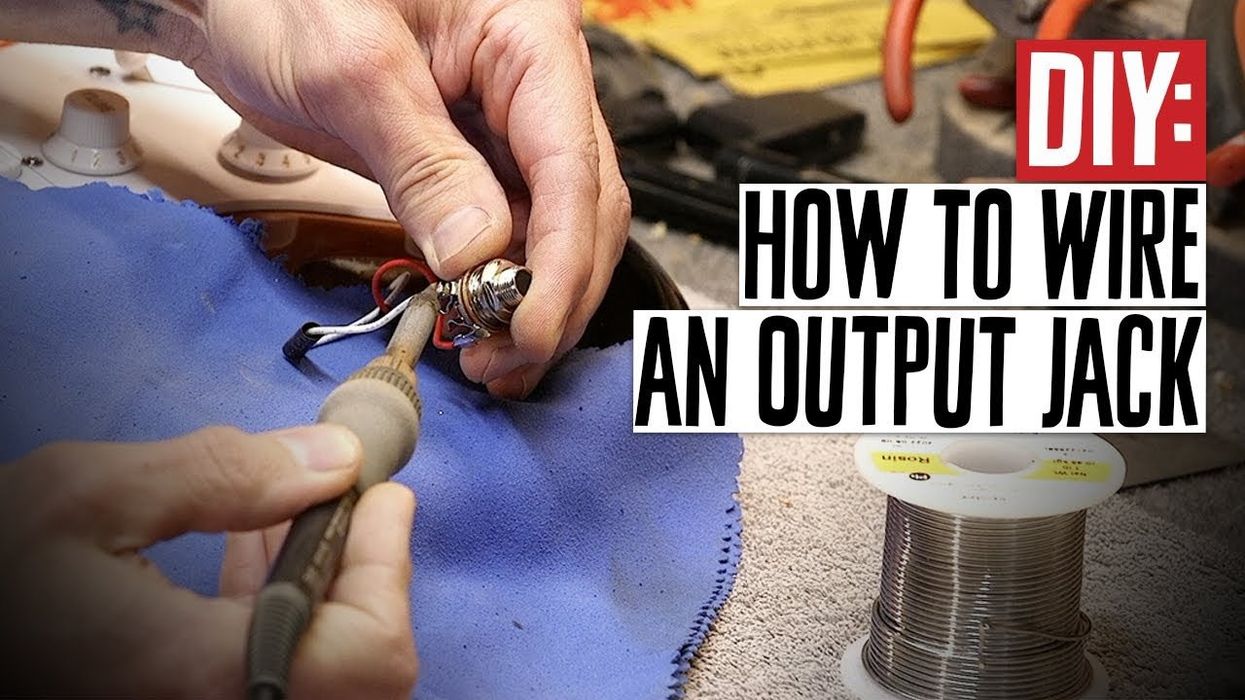My first instrument was violin. I picked it up a year before I got my first guitar and I played for about seven years. Though I haven't practiced in years, I think playing violin had a profound impact on my ear and my desire to play in tune at all times. There are no frets to guide you on the violin, so you have to be constantly aware of your intonation. There's nothing more excruciating than listening to an out-of-tune violinist! This month, I'm going to focus on maximizing the tuning stability of your electric guitars.
Setting intonation.
Because the guitar uses equal-temperament tuning, it can never actually be perfectly in tune. The best we can hope for is a sort of happy medium, and the length of each string from the nut to the bridge saddle must be adjusted precisely in order to maximize and maintain that happy medium. This is called intonation, and I highly recommend checking your guitar's intonation on a regular basis.
Most electric guitars feature adjustable bridges that allow you to individually modify the scale length of each string. It's a good idea to make intonation adjustments after you've adjusted anything else on your guitar—such as the truss rod—that could affect the length of the string from the bridge to the nut.
You should use a quality electronic guitar tuner to check intonation. First, play the 12th-fret harmonic of the 6th string and make sure it reads perfectly in tune. Now play the fretted 12th-fret note. If it reads flat, the bridge saddle must be moved forward towards the nut. If the fretted note is sharp, the bridge saddle must be moved away from the nut. Tip to remember: Flat equals forward.
It's important that you only attempt to adjust intonation using relatively new strings. Once strings develop pits and flat spots from making contact with the frets, they simply won't intonate properly. Speaking of which, change your strings fairly frequently if you want to be as in tune as possible, and stretch them properly when you first put them on. After re-stringing, I pull each string firmly but gently away from the fretboard over the entire length of the string from the bridge to the nut. Then I re-tune and repeat until the strings don't go flat anymore. Proper stretching of the strings will go a long way towards alleviating tuning headaches later on.
Using a dab of lubricant in each nut slot keeps the string friction to a minimum, and I do this every time I change strings.
The nut.
For the open notes to sound correct, the strings need to break over the nut at an angle and create downward tension as they head over the headstock toward the tuners. Some friction is unavoidable, so the trick is to minimize that friction. Having a nut that's cut properly is crucial: If the nut slots are cut too narrow for the string gauge you use, this can cause the string to bind—certain to cause tuning headaches. If the nut slots are not cut deep enough, action can suffer and fretted notes can sound noticeably sharp. Too deep, and the strings will buzz against the 1st fret. It's a fine line, and making sure your nut is optimized is a job best left to a competent tech or luthier. Even expensive guitars straight from the factory sometimes need the nut to be adjusted and tweaked to maximize playability and tuning stability. A replacement nut made of slippery material like graphite can greatly help alleviate binding, but keep in mind that nut material affects tone.
Fender-style guitars.
Electric guitars with Fender-style six-on-a-side headstocks usually have relatively straight string-pull, meaning the strings don't fan out from the nut. Straight string-pull is a good thing in my book, because it means the string faces less resistance on its way from the bridge to the tuning peg. However, headstocks like this normally don't slant backwards at an angle like Gibson-style headstocks, and that's why string trees are used to create enough downward tension on the strings as they pass through the nut. But string trees are another place the strings can possibly bind. You can avoid using string trees on Fender-style guitars by winding the 1st, 2nd, and 3rd strings quite low on the tuning posts to create enough downward tension.
My Suhr instruments use locking tuning pegs with staggered-height posts that create more downward tension on the high strings. These tuners eliminate the need for string trees, and because they are locking, they also eliminate the need to wind the string around the post, which removes yet another potential source of tuning stability issues. I highly recommend retrofitting Fender-style guitars with locking, staggered tuners.
Gibson-style guitars.
Guitars with three-on-a-side headstocks often don't have straight string-pull across the nut and the strings fan out somewhat from the nut to the tuners. With downward tension from the slanting back of the headstock also a factor, tuning issues can develop. That's why I religiously lubricate the nuts on my Gibson-style guitars. Using a dab of lubricant—such as Big Bends Nut Sauce—in each nut slot keeps the string friction to a minimum, and I do this every time I change strings. Adding a little to the point where the strings break over the bridge saddles doesn't hurt either.
One other tuning tip for Gibson-type axes: I'll check the tuning on the 2nd string at the 3rd fret as well as the open B. I often find that I need to tune the open B ever so slightly flat, otherwise the 3rd fret D note will be slightly sharp and that makes many chords sound sour to me. Once again, it's a balancing act and impossible to get a guitar perfectly in tune.
I hope you find these tips useful. It goes without saying that the more in tune you play, the more your audience will appreciate it!
[Updated 10/22/21]
